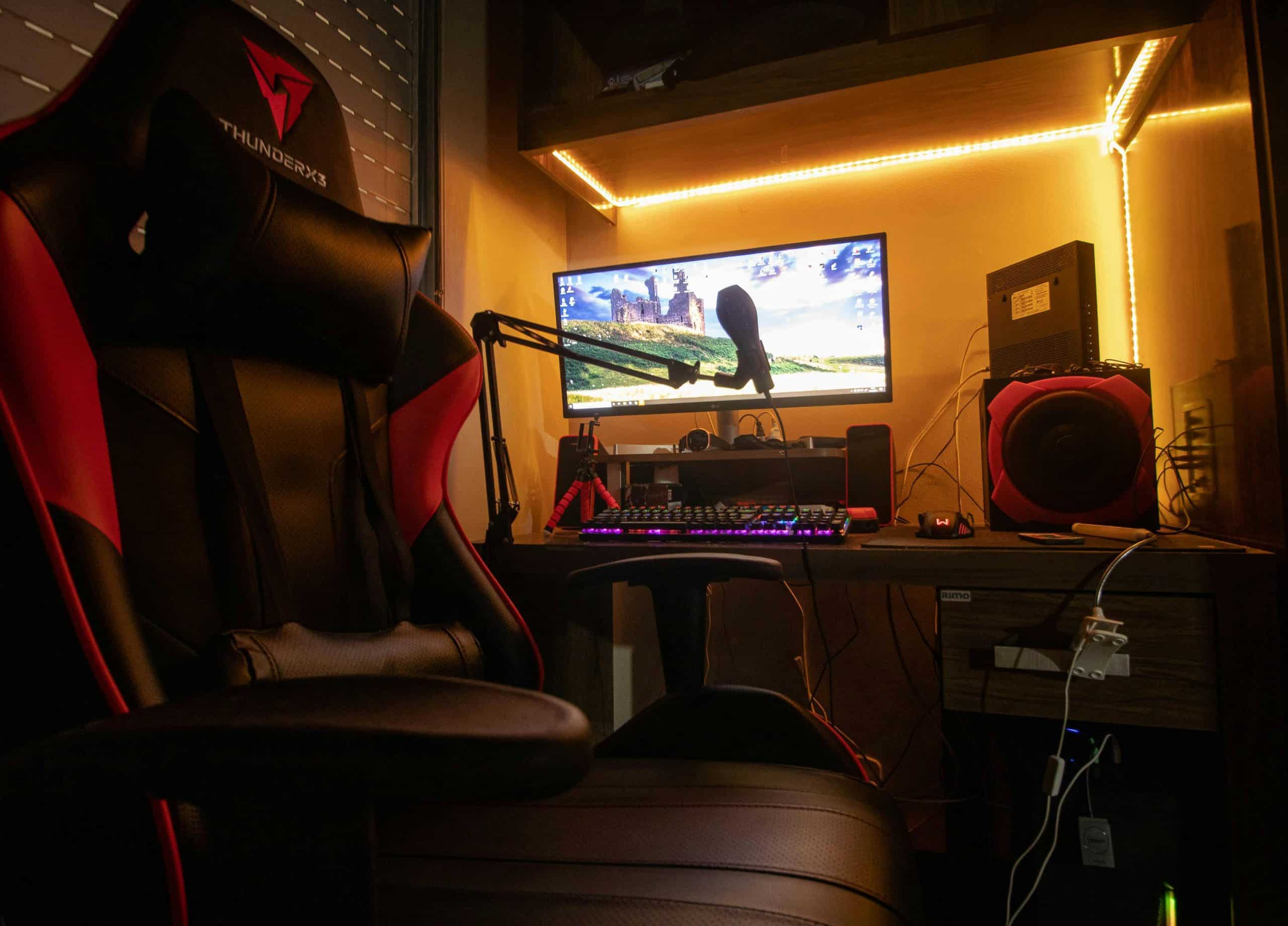How do you set up a dedicated gaming network using a TP-Link Archer AX11000 router?

As the digital landscape rapidly evolves, gaming has ascended to unprecedented heights, blending high-stakes competition with immersive narratives. The backbone of this revolution is a robust and reliable network. For those serious about their gameplay, a dedicated gaming network isn’t just a luxury—it’s a necessity. Today, we guide you through the meticulous process of setting up a dedicated gaming network using the TP-Link Archer AX11000 router, a powerhouse renowned for its speed, reliability, and advanced features.
Understanding the TP-Link Archer AX11000 Gaming Router
The TP-Link Archer AX11000 is a gaming router designed to handle the high demands of gaming. With its cutting-edge technology, it’s built to provide an uncompromised gaming experience.
Lire également : How can you set up a Dell G5 5000 for high-frame-rate gaming on a 240Hz monitor?
The Archer AX11000 boasts a tri-band frequency system, delivering impressive speeds across three bands. The router supports VHT MCS, which stands for Very High Throughput Modulation and Coding Scheme, enabling faster data rates. This router operates on both 2.4 GHz and 5 GHz bands, ensuring a wide and stable signal range.
Moreover, the router comes with a quad-core CPU, ensuring seamless multitasking and minimal lag. This, combined with the DBM (decibel milliwatts) power measurement, ensures optimal signal strength for your devices. The WAN port and multiple LAN ports facilitate easy and efficient connectivity.
Dans le meme genre : What are the critical steps in setting up a multi-camera video conferencing system using a Logitech MeetUp?
Setting Up Your TP-Link Archer AX11000 Router
Now that you understand the basics of what the TP-Link Archer AX11000 offers, let's delve into the setup process to ensure you get the best out of your gaming network.
Unboxing and Initial Setup
Upon unboxing your TP-Link Archer AX11000, you’ll find the router itself, a power adapter, an Ethernet cable, and a quick installation guide. The first step involves connecting the power adapter to the router and plugging it into a wall outlet. Next, use the Ethernet cable to connect your modem to the router’s WAN port.
Once powered on, the router will broadcast a default WiFi signal. Using a wireless device, connect to this signal and follow the on-screen instructions to complete the initial setup. It’s pivotal to change the default login credentials to ensure your network's security.
Optimizing Wireless Bands
The Archer AX11000’s tri-band system allows multiple devices to connect without interfering with each other. Assign one of the 5 GHz bands exclusively for gaming. This band, with its higher frequency, offers faster speeds and reduced latency, perfect for gaming. The 2.4 GHz band can support your other smart devices and regular internet usage.
Access the router’s settings through the web interface or the TP-Link Tether app. Navigate to the 'Wireless Settings' section, where you can rename your bands, set strong passwords, and change the channels to minimize interference.
Configuring QoS (Quality of Service)
QoS is a crucial feature that allows you to prioritize gaming traffic over other types of traffic on your network. On the TP-Link Archer AX11000, you can access QoS settings through the web interface.
Enable QoS and set the gaming device as a high-priority device. This ensures that when the network is congested, gaming traffic will be given higher priority, reducing lag and enhancing the gaming experience.
Engaging VHT MCS for Enhanced Performance
Leveraging VHT MCS on your Archer AX11000 can significantly boost your network’s performance. VHT MCS allows for higher data rates, meaning faster Mbps and a more stable connection.
Access the advanced settings of your router through the web interface. Under the wireless settings, you’ll find the option to enable VHT MCS. Activate it to ensure your gaming traffic is transmitted at the highest possible data rates.
Connecting and Optimizing Devices for Gaming
The next step in setting up your dedicated gaming network involves correctly connecting and optimizing your gaming devices.
Wired Connections for Stability
While the Archer AX11000 excels in wireless performance, using a wired connection often provides the most stable link for gaming. Connect your gaming console or PC directly to the router using an Ethernet cable. Utilize the router’s LAN ports for this purpose. This direct connection helps to eliminate any potential wireless interference and provides a consistent, low-latency gaming experience.
Port Forwarding for Seamless Gameplay
Many online games require specific ports to be open for the best performance. Port forwarding allows you to direct incoming traffic to your gaming device, ensuring a seamless gaming experience.
Access your router’s settings and navigate to the ‘Service Port’ section. Here, you can add the necessary ports for your specific games. This will allow your router to know which device to send the gaming traffic to, reducing lag and improving performance.
Utilizing Game Accelerator Features
The Archer AX11000 comes with built-in Game Accelerator features. These features are specifically designed to optimize your network for gaming.
In the router’s interface, enable the Game Accelerator mode. This feature detects gaming traffic and optimizes the data streams for reduced latency and improved overall gaming performance.
Maintaining Your Gaming Network
Setting up your gaming network is only the beginning. Maintaining it is crucial to ensure consistent performance.
Regular Firmware Updates
TP-Link regularly releases firmware updates for their routers, including the Archer AX11000. These updates often include security patches, performance improvements, and new features.
Check the TP-Link website regularly or enable automatic updates within the router’s settings. Keeping your router’s firmware up-to-date is essential for maintaining the best possible performance and security for your gaming network.
Network Monitoring and Maintenance
Using the TP-Link Tether app, you can monitor your network’s performance in real-time. This app provides insights into your network’s health, connected devices, and usage patterns.
Regularly check for any unusual activity or overloading. If you notice any dips in performance, consider restarting your router or checking for any firmware updates.
Expanding Your Network
As your gaming needs grow, you might need to expand your network. The Archer AX11000 supports mesh network setups, allowing you to add additional TP-Link devices to extend your network’s range and coverage.
Consider adding a TP-Link mesh extender or additional routers to create a broader, more robust network. This can be especially beneficial if you have a large home or multiple floors to cover.
Setting up a dedicated gaming network with the TP-Link Archer AX11000 router is a comprehensive process that involves careful planning and configuration. By leveraging the router’s advanced features like tri-band frequencies, VHT MCS, QoS, and Game Accelerator, you can create a network that prioritizes and optimizes your gaming traffic.
Using wired connections, configuring port forwarding, and keeping your router’s firmware up-to-date ensures a stable and secure gaming environment. Regular network monitoring and the potential for expansion with mesh networks further enhance your setup.
In conclusion, the TP-Link Archer AX11000 is equipped to handle the rigors of a dedicated gaming network, providing you with the speed, stability, and reliability needed for an unparalleled gaming experience. By following the steps outlined in this guide, you can transform your home network into a gaming powerhouse, ensuring every game is played at its best.
